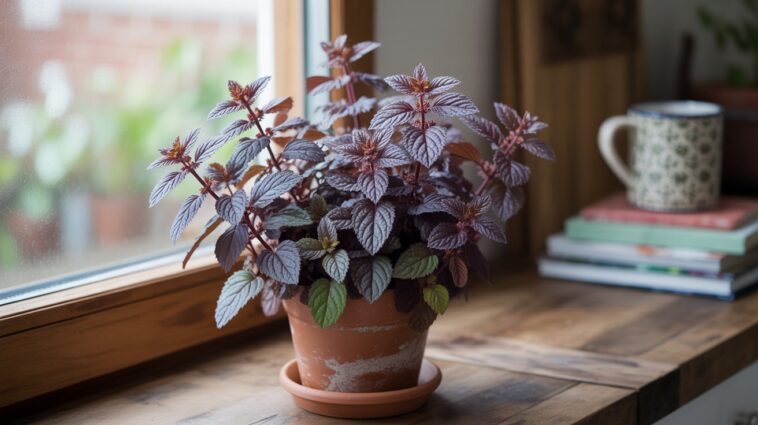There’s something undeniably magical about chocolate mint. The first time I encountered it, I was browsing a local plant fair on a warm spring morning. I leaned in to sniff a plain-looking mint plant, and suddenly—I was hit with the unmistakable aroma of chocolate and peppermint. It was like dessert and garden freshness rolled into one. I took it home that day, and since then, I’ve made sure to never run out.
The great news? You don’t have to buy a dozen chocolate mint plants to fill your garden or patio. All you need is one healthy mother plant and a few minutes of your time. Propagating chocolate mint from cuttings is incredibly easy, even if you’ve never grown anything before. Let me show you exactly how I do it—it’s one of the most fun and rewarding things you can do as a home gardener.
What Is Chocolate Mint?
Chocolate mint (Mentha × piperita ‘Chocolate’) is a variety of peppermint that carries a distinctive cocoa-like scent, especially when the leaves are crushed. While it won’t make your tea taste exactly like a candy bar, it does add a subtle, chocolatey depth to drinks, desserts, and even homemade scrubs or potpourri.
It grows just like other mint varieties—fast, sprawling, and practically indestructible—so it’s ideal for propagation and container gardening. And because it’s so vigorous, I always recommend growing it in pots to keep it from taking over your garden.
Step 1: Take the Right Cuttings
Whenever I want to expand my chocolate mint patch—or gift a plant to a friend—I start by taking cuttings from a mature, healthy plant. I usually do this in spring or early summer when the mint is putting out lots of fresh growth.
Look for green, non-flowering stems that are about 4–6 inches long. You want soft, pliable shoots—not woody ones. Using clean garden scissors or pruners, snip just below a leaf node (the spot where leaves grow out from the stem). This is where roots will emerge.
Strip the lower half of the leaves from the cutting so that only the top few pairs remain. Removing the lower leaves helps prevent rot and allows the cutting to focus its energy on root development.
Step 2: Rooting the Cuttings
Chocolate mint is one of the easiest herbs to root—it practically does the work for you.
Water Method (My Go-To):
Place your stripped cuttings in a glass or jar of clean water, making sure that only the bare stems are submerged. Avoid submerging the leaves—this can lead to rot.
I keep the jar on a bright windowsill out of direct sunlight. Every few days, I change the water to keep it fresh and oxygenated. Within 5–10 days, you’ll start seeing little white roots sprouting from the nodes.
Once the roots are an inch or so long, the cuttings are ready to plant.
Soil Method (For Direct Potting):
If you prefer to skip the water stage, you can plant your cuttings directly into a pot of moist, well-draining soil. A mix of potting soil and perlite or coco coir works great. Keep the soil damp but not soggy, and cover the pot loosely with a clear plastic bag to create a humid environment.
I like to use skewers or chopsticks to keep the plastic from touching the leaves, and I open the cover every day for a few minutes to let the air circulate. Within a couple of weeks, the cuttings should have enough roots to continue growing on their own.
Step 3: Transplanting and Growing On
Once your cuttings have rooted—whether in water or soil—they’re ready to move into their own pots or into the ground (if you don’t mind them spreading like wildfire).
Container Growing:
I always grow chocolate mint in pots to keep it contained. Trust me—mint will escape and spread like crazy if it’s planted directly in the garden. I use medium-sized pots (8–10 inches across) with good drainage holes and a lightweight potting mix.
Plant your rooted cuttings and water them in well. Place the pot in a sunny spot with at least 4–6 hours of sunlight a day. Chocolate mint will tolerate partial shade, but full sun helps bring out the best flavor and scent.
Watering:
Mint likes consistent moisture but hates soggy feet. I water when the top inch of soil feels dry. In the heat of summer, this might be every day; in cooler weather, every few days is usually enough.
Step 4: Pruning, Feeding, and Maintaining
Chocolate mint grows fast—really fast—so don’t be afraid to prune it often. Regular harvesting keeps the plant bushy and prevents it from getting leggy.
I usually pinch or snip stems just above a pair of leaves. The more you cut, the more it grows, and you’ll quickly have a lush, fragrant mass of mint ready for tea, mojitos, or chocolate-mint ice cream.
Fertilizing:
I don’t feed mint very often, but once a month in the growing season I might give it a little diluted organic liquid fertilizer. Too much fertilizer makes the leaves less flavorful, so I keep it light.
Pest and Disease Tips:
Mint is tough, but I still keep an eye out for aphids, spider mites, and powdery mildew. Regular air circulation, spacing your pots, and avoiding overhead watering all help prevent problems.
Step 5: Enjoy the Harvest
Once your plant is thriving, you can harvest regularly. I like to snip a few sprigs for evening tea or to garnish desserts. Chocolate mint also makes a fantastic addition to homemade sugar scrubs, scented sachets, or refreshing iced drinks in summer.
To dry it, I tie small bundles with twine and hang them upside down in a dark, dry spot. Once the leaves are crisp, I strip them off and store them in a sealed jar. Even dried, the scent of chocolate mint is rich and comforting.
Final Thoughts
There’s something incredibly satisfying about turning a single stem into a whole new plant. Every time I propagate chocolate mint, I feel like I’m performing a little magic trick. It’s one of the most rewarding herbs to grow—not just because it’s beautiful and delicious, but because it’s so generous.
Whether you’re a beginner gardener or just someone who loves the smell of fresh herbs in the kitchen, chocolate mint is an easy win. Try rooting a cutting or two—you’ll be amazed at how quickly they grow into full, lush plants. And every time you brush your hand through the leaves, you’ll get that same sweet, chocolatey surprise that made me fall in love with this plant in the first place.


